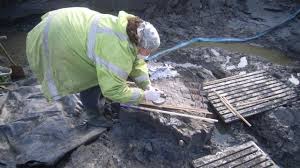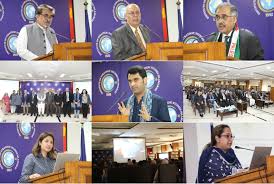Roman egg still intact found in UK in ‘amazing’ discovery

London: Researchers have cracked one of the mysteries hidden within a Roman egg, discovering that it still contains its liquid almost two millennia after it was first laid.
“This is the oldest unintentionally preserved avian egg I have ever seen,” Douglas G.D Russell, senior curator of birds’ eggs and nests at the Natural History Museum (NHM), who was consulted about best preserving the ancient egg, told CNN in a statement. “That makes it fascinating.”
He pointed out that there are older eggs with their contents still inside them, like a series of mummified eggs at the NHM, probably excavated in Egypt in 1898, but no other known examples of naturally preserved eggs that are this old.
The egg was first discovered in 2010 alongside three others in Aylesbury, England – about 80 kilometers (50 miles) northwest of London – during an excavation conducted by charity Oxford Archaeology, Edward Biddulph, senior project manager at Oxford Archaeology, told CNN.
Pottery and other finds uncovered alongside the egg were dated to the late 3rd century AD, allowing archaeologists to estimate its age too, Biddulph added.
A woven basket, thought to have contained bread, was found alongside the eggs.
Nestled in a pit that had been used to supply water for malting and brewing until around 270 AD, archaeologists believe that the eggs had been left there as gifts to the gods once the pit had fallen into disuse, Biddulph said.
“These sort of areas in the Roman world tend to encourage rituals… as offerings to the gods or good luck, just like people do today throwing coins into fountains,” he added.
Three of the four eggs discovered were whole but, given their extreme fragility, two cracked once they were removed from the wet conditions that had kept them so well preserved, emitting a “sulphurous aroma,” archaeologists said in a press statement at the time.
It wasn’t until August that researchers discovered the liquid inside the one remaining egg when Biddulph said he enlisted conservator Dana Goodburn-Brown, alongside the University of Kent, to conduct a micro-CT scan of the egg, showing that its yolk and white were remarkably still present.
“I’ve never ever seen something like this before,” Biddulph said. “It’s amazing. It looked so modern, it looked so new.”
Handling such a fragile and precious discovery has caused Biddulph to sometimes have his “heart in his mouth,” he added. It also left Goodburn-Brown particularly “nervous” when she carried it in a special box on public transport in London to be examined, he added, but the egg has largely remained safe in their offices.
A micro-CT scan of the egg showed it still had liquid inside.
“Going forward, it will be very exciting to see if we can use any of the modern imaging and analysis techniques available here at the NHM to shed further light on exactly which species laid the eggs and its potential archaeological significance,” Russell said.
Biddulph added that researchers are planning to carefully extract the liquid to better study it, in a process similar to egg blowing, where a tiny hole is made in its shell after creating a 3D model.
“Nobody has seen anything like this before so every stage of the research into this is creating new moments of amazing potential,” he said. “It’s very exciting.”





